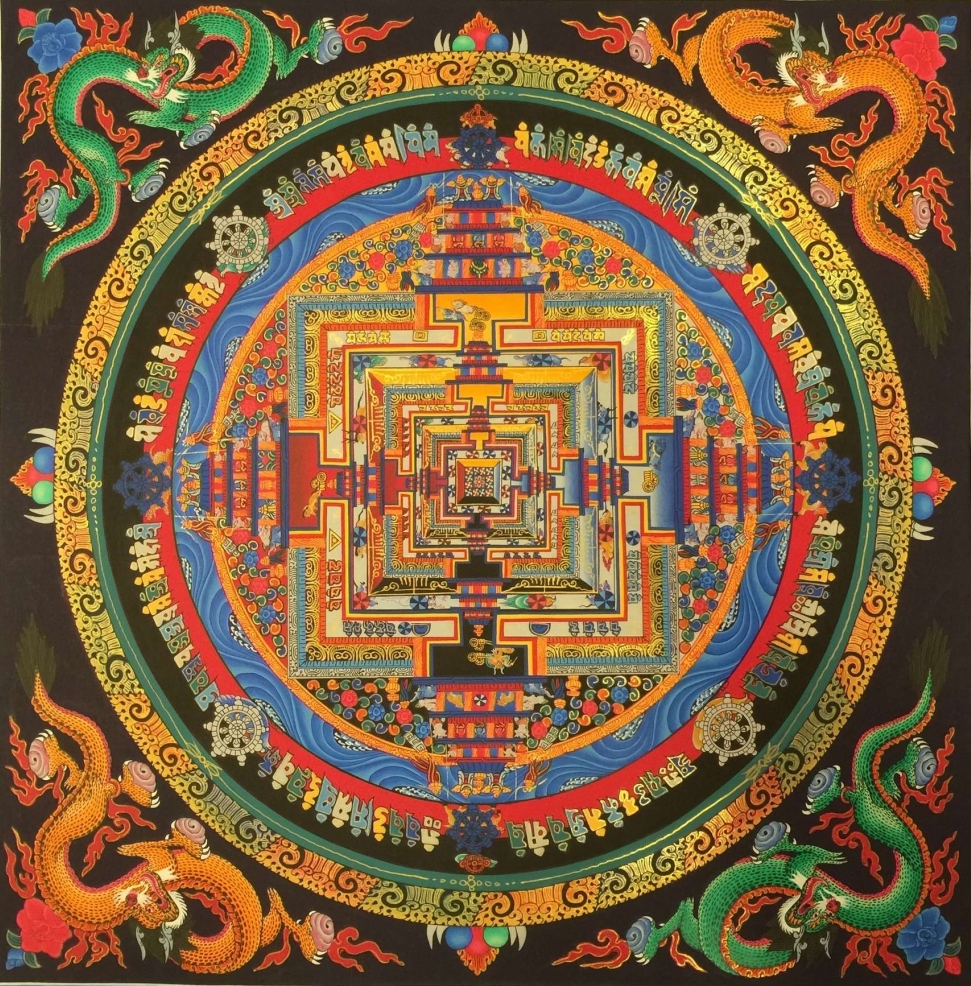“I sketched every morning in a notebook a small circular drawing, a mandala, which seemed to correspond to my inner situation at the time… Only gradually did I discover what the mandala really is: … the Self, the wholeness of the personality, which if all goes well, is harmonious.”
– C.G. Jung
“Mandala“ is a compound Sanskrit word derived from manda, which means “essence,” and la, meaning “container.” Thus, a mandala is a “container of essence.” The container is your reality, and the essence contained in the mandala is your mind.
In Buddhism, there are many mandalas to represent different things. There are mandalas of samsara (conditioned existence) and the universe, mandalas of pure and heavenly realms, and mandalas representing hell realms. These mandalas are idealized representations of those realities.
Meditation practices using mandalas are a powerful way of gaining awareness of different realities and mental states. For example, by visualizing a mandala of samsara “the wheel of suffering” we may become aware of our own attachments to this life and the impermanence of our existence. Similarly, visualization of a Kalachakra mandala, which represents enlightened society and individual being, allows us to appropriate those enlightened qualities. Thus mandalas show us our faults but also our ultimate potential.
The psychiatrist, Carl Jung, saw mandalas as “a representation of the unconscious self.” He believed his paintings of mandalas helped him to identify emotional states and work towards a wholeness in personality. Jung’s mandalas helped him understand a deeper sense of his own reality, and he used that awareness to grow and transform himself into a better person and healer.
Jung recognized that each one of us is a mandala. Like a kaleidoscope, the mandala changes with our thoughts, emotions, intentions, and actions. It is the reality we perceive and the one we choose to create every day of our lives.
In the Asian traditions, the dragon is a positive symbol associated with wisdom and wrathful compassion. Modern Western culture has appropriated this progressive view of dragons, imparting upon them virtues such as strength, truth, and fearlessness. As depicted below, dragons and their symbols are common features in the mandalas depicting enlightened societies and self. Like the wrathful dieties, a dragon’s mind is clear, fierce, and unattached. Because they have conquered their own minds, they are the protectors of the perfect truth represented by the idealized mandala as seen below.
By visualizing the dragon as part of our own mandala, we discover a skillful means (a shortcut) to harness our own potential (inseparable from the dragon’s potential) for self-improvement and realization. Dragons have always been alive in the collective unconscious. Let them free.


